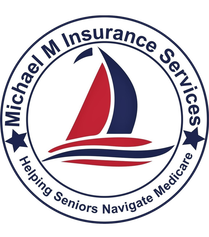Introduction: Medicare Isn’t a Magic Wand — But It’s a Good Start
If you’ve recently turned 65 (or are getting close), you’ve probably got that shiny red, white, and blue Medicare card in hand. Maybe it felt like a relief — finally, some health coverage after decades of premiums and paperwork.
But here’s the honest truth that most people aren’t told clearly:
Original Medicare alone might not be enough.
And no, this isn’t a sales pitch. It’s just what you need to know as someone trying to protect your
health — and your wallet — in retirement.
This blog is for middle-class retirees who are skeptical of salespeople and just want the real story without pressure. If that sounds like you, you’re in the right place.
Let’s Start With the Basics: What Does Original Medicare Cover?
Original Medicare includes:
- Part A (Hospital Insurance)
Covers inpatient hospital stays, some skilled nursing facility care, hospice, and limited home health care. - Part B (Medical Insurance)
Covers doctor visits, outpatient care, lab work, preventive screenings, and durable medical equipment.
Costs in 2025:
- Part A Premium: $0 (if you worked 40+ quarters)
- Part A Deductible: $1,676 per benefit period
- Part B Premium: $185/month (standard)
- Part B Deductible: $257/year
- Coinsurance: 20% of Medicare-approved services — and there’s no limit on how much that could cost.
You might notice a few gaps already…
So What’s Missing?
Original Medicare does not cover:
- Prescription drugs (unless you add a separate Part D plan)
- Most dental, vision, or hearing care
- Long-term care or custodial care
- Overseas emergency coverage
- An out-of-pocket maximum (This is a big one — we’ll come back to it.)
For a lot of folks, that’s fine — until they need expensive treatment, costly meds, or end up in
the hospital for longer than expected. And then? Surprise bills. Lots of them.
Why Middle-Income Retirees Should Pay Extra Attention
If you’re reading this, chances are you’re like many of the folks I talk to every day:
- You’ve worked hard and saved decently.
- You’re not poor enough to qualify for extra help.
- You’re not rich enough to write a blank check for a health emergency.
- You don’t want to be “sold” on something — you just want the facts.
Here’s the middle-class Medicare problem:
You’re stuck in the squeeze. You can afford more coverage, but only if it makes real sense. You
don’t want fluff, but you do want protection.
What Are My Options to Fill the Gaps?
There are two main ways to add protection beyond Original Medicare:
Option 1: Medicare Supplement Insurance (Medigap)
What it is:
A policy from a private insurer that helps pay the deductibles, coinsurance, and copayments
that Medicare doesn’t.
Why people like it:
- Predictable out-of-pocket costs
- Freedom to see any doctor who accepts Medicare
- No need for referrals or networks
- Pairs well with a standalone Part D drug plan
But keep in mind:
- You pay a monthly premium (often $100–$200+ depending on the plan and your location)
- Doesn’t include prescription drugs
- Doesn’t cover extras like dental or vision
Best for: People who want peace of mind, travel often, or have specific doctors they like to keep
Option 2: Medicare Advantage Plans (Part C)
What it is:
An “all-in-one” plan offered by private companies that combines Parts A, B, and usually D —
and may include extras like dental, vision, hearing, or fitness benefits.
Why people like it:
- Often has low or $0 premiums
- May include prescription drug coverage
- Often includes some dental, vision, and hearing
- Some plans cap your out-of-pocket costs (which Original Medicare doesn’t)
But keep in mind:
- You must use the plan’s network (HMO/PPO)
- Referrals may be required
- Plans can change yearly
- Coverage may not travel well if you move or travel frequently
Best for: Budget-conscious folks who are okay with networks and want more benefits
bundled in.
What Happens If I Stick With Just Medicare?
You can choose to only use Original Medicare. Some people do.
But be aware of the risks:
- Unlimited 20% coinsurance for doctor visits, surgeries, and outpatient services. There’s no cap.
- No coverage for high-cost drugs unless you buy Part D.
- Hospital bills can stack up fast after your deductible is met.
- One illness could derail your retirement savings if it leads to lengthy or repeated treatments.
It’s like going on a road trip without a spare tire — you might make it just fine, or you might get stuck in the middle of nowhere.
How Do I Know What’s Right for Me?
Great question. Here are a few “gut check” prompts:
- Do I have any current health conditions that require frequent care or medications?
If yes, a Medigap plan or a strong Advantage plan with drug coverage could save you big. - Do I travel often or live in two states during the year?
Medigap offers nationwide flexibility. Many Advantage plans don’t. - Do I want predictable monthly costs, or am I okay with some risk in exchange for lower premiums?
Medigap gives you cost predictability. Advantage plans are more “pay as you go.” - Do I want dental, vision, or extras?
Only Advantage plans usually include these. With Medigap, you’d need to buy separate policies.
You Don’t Need to Decide Alone
Here’s the most important thing I can tell you:
You don’t have to figure all of this out by yourself.
There’s a reason Medicare feels confusing — it’s not one-size-fits-all. And what worked for your
neighbor, cousin, or friend might not work for you.
But with the right guidance — calm, clear, and pressure-free — you can make a decision you
feel good about.
Final Thoughts: You Deserve the Full Picture, Not the Hard Sell
Choosing the right Medicare path is one of the most important decisions you’ll make in
retirement. And you deserve a real conversation about it — not a pitch.
So do you need more than just Medicare?
Probably.
But which path is right? That’s the part worth exploring — carefully, honestly, and on your own
terms.
Need help figuring it out? I’m here for the questions, not the push. If you want to talk it through, I’m just a phone call or email away.
Because this should be simple.
And you should feel safe making the choice.
FAQs
So How Do I Get the Information I Need?
Contact the author of this Blog. He can review your options.
Can’t I Just Use The Medicare and You Guide?
Yes, the Guide is packed with information. Unfortunately, there is so much information it’s
easy to get wrong information.
Does A Medicare Broker Work For Insurance Companies?
No, he is Certified with them so he is able to offer multiple unbiased options.

